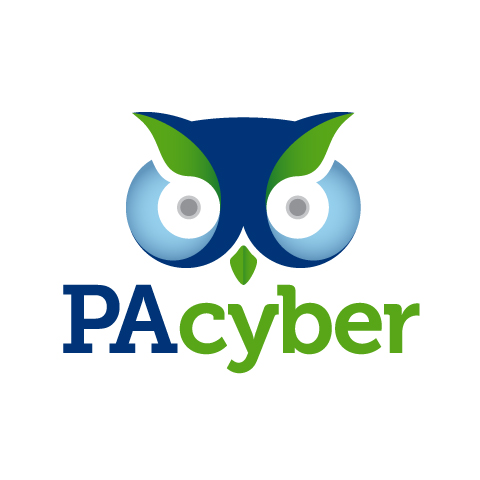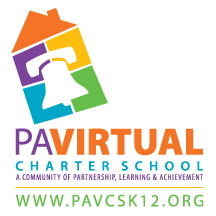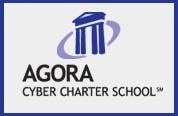
INSYS433:
Lesson 1: Overview of K-12 Online Education
Lesson 1 Blueprint
Introduction

Figure 1.1: Online education.
Credit: iStock
Welcome to INSYS 433, Teaching and Learning Online (TLO) in K-12 Settings. For many of us the idea of online teaching and learning in university settings is pretty familiar. After all, you’re taking an online course right now! So using online resources like ANGELand other learning management systems, dispensing information, engaging in online discussion forums, and sharing projects collaboratively across time and space has become more than reality - it’s commonplace among university students and instructors.
But doing these same activites in the K-12 setting has only recently become feasible and useful. For a variety of reasons, and with various pros and cons that you’ll explore in this lesson, TLO in K-12 is a new enterprise that quite clearly needs to be approached with the same caution and enthusiasm as all new ideas in the K-12 environment. This lesson will expose you to the basic ideas in TLO in K-12 and begin to build a critical element in your thinking about this innovation.
Objectives
Here are the objectives for this lesson.
- Describe different types of online learning in K-12 settings.
- Discuss pros and cons of different types of online learning in K-12 settings.
- Demonstrate a basic understanding of the financial impacts of cyberlearning in the public school system.
Activities
- Read Chapter 1: "The Landscape of K-12 Online Learning."
- Review all course materials for the lesson.
- Explore examples of K-12 TLO.
- Participate in the discussion forum on pros and cons.
- Establish relationships with your teaching team.
Academic Integrity
As student of Penn State, you are required and expected to understand and accept our policies on academic integrity and plagiarism. Although you may have read this information in other courses, you are required to reread and abide by this Academic Integrity Statement and submit the agreement form that follows it.
What is TLO in K-12 Settings?

Figure 1.2: Primary student preparing to learn online.
Credit: iStock
Our readings for this lesson will introduce you to the basics of the K-12 online learning landscape. The authors point out that there are several types of online K-12 learning programs such as statewide, online learning consortia, college or university based programs, and private providers. There are two specific types of online K-12 learning programs, cyber charters and local school-based programs.
Cyber Charters
Cyber charters are free public schools formed under the charter school legislation in place in some states. Pennsylvania has a large number of cyber charters and the video on cyber charters and their financial implications for our traditional public school system provides some additional information about cyber charters, particularly in PA. These schools are relatively large. Recent innovations that seem to be mostly focused on profit, though that is not the case for all cyber charters. While it is true that there are often very good job opportunities in cyber charters, they tend to rely primarily on lower paid tutors rather than fully certified teachers.
Read this Analysis of Pennsylvania's Cyber Charter Schools for a brief on the issues of cyber charter schools in Pennsylvania.
Local School Program
The second type of online K-12 program is the local school program. This program has been on the rise in PA recently as a result of the realization that local districts are losing funds to the cyber charter movement. Initially these schools were created to serve populations who didn’t have access to education otherwise, such as students who are Olympic athletes or who can’t function in a traditional school because of bullying or behavior issues. However, school-based online learning also helps small districts to connect with unique offerings that they wouldn’t otherwise be able to offer. For example, there might be four students who want to take Latin in each of five schools, but the schools they attend don’t offer Latin and are rural and very spread out geographically. This is an excellent opportunity for online learning to solve this problem by connecting these small groups of students through an online course.
Does K-12 TLO Work?
The research on this topic is very difficult to untangle. Your text is mostly on the positive side, but does present a fairly balanced view of the various aspects of online learning effectiveness across students, course designs, instructional factors, and so forth. They devote chapters to these areas, but not all the research is presented. For example, there is compelling evidence that most charter schools (cyber or otherwise) tend to have a more homogenized student body, meaning that they will often end up with a far less diverse population particularly where race is concerned, than a traditional school. This fact has created some concern that charter schools allow families to choose a private-type education and insulate themselves from some of the important social orientation that our schools help our population realize.
In the end, there is research on both sides of this question that is compelling, and in time experts believe we’ll come to a place where we are more certain of the true effectiveness of K-12 TLO in terms of traditional measures.
K-12 Online and Higher Education Online
Teaching and learning online may seem like a simple concept to many of you since you’re already in an online course right now. The development of online courses in higher education is definitely well-established and most university students are familiar with the online learning experience. But learning online for a five year old is a very different experience.
There are many ways in which the K-12 TLO enterprise differs from the more established higher education online learning field.
Click Similarities and Differences to explore a comparison of K-12 and Higher Education TLO.
SIMILARITIES
Similarities Between K-12 and Higher Education Online Learning
- K-12 online learning relies heavily on discussion forums.
- Content is delivered primarily through the Internet.
- Students interact with the content independently.
-
K-12 online learning takes a lot of time for both the teacher and the student, though both may imagine it to be easier than traditional classroom learning.
- K-12 online learning can be tailored to learner needs either by the learner or by the instructor more easily than large traditional classroom delivery.
- It is a struggle to make certain kinds of learning available online (e.g. science labs).
DIFFERENCES
Differences Between K-12 and Higher Education Online Learning
- K-12 online classes must be tailored for the young learner, making them very different.
- They are more interactive.
Significantly more live teacher time is required.
- They tend to rely more heavily on images, video, and audio and far less on text.
- Free online K-12 courses are usually paid for by tax-payers.
- Surrounding districts usually pay for K-12 online classes.
- They may evidence much more marketing, advertising, and lobbying than traditional online higher education and certainly more than surrounding traditional schools.
- K-12 students under age 12 must have supervision at all times.
These are just a few of the ways that K-12 learning online is similar to and different from higher education online learning, with which you may be far more familiar.
Examples of TLO in K-12 Settings
Spend some time exploring the online cyber charter schools listed below. As you do, try to gain a deeper understanding of what they do, how they do it, and what their learners are like.
Click each cyber charter school below to explore their website.
 |  |  |
If you were making a decision for your own child, how would these cyber charter school's materials make you feel? If you can, compare their websites with the website of the district where you went to school and determine what you think about making such a choice as a parent. You should also think about potential broader social implications of the K-12 TLO movement. You can reflect on some of this in your discussion forum posts regarding the pros and cons of K-12 TLO.
Next, view the K12, Inc. website. This will help you prepare as you participate in the discussion forum this week.
View this TED talk, "A Closer Look at Cyber Charter School."
Activities
- Read: Chapter 1: "The Landscape of K-12 Online Learning."
- Read "An Analysis of Pennsylvania's Cyber Charter Schools."
- View Sticky Concepts on E-learning.
- View these examples of K-12 E-learning, paying attention to the curriculum aspects:
- View the K12, Inc. website.
- View the TED Talk A Closer Look at Cyber Charter Schools.
- Discuss: After reviewing K-12 E-learning examples, the K12, Inc. website, and the TED talk, discuss the pros and cons of K-12 E-learning from at least these perspectives:
- The perspective of a child/parent decision for an individual.
- The perspective of society as a whole in terms of the public good of the public education system.
- Establish relationships with your teaching team.
Wrap Up and Looking Ahead
Summary
This week you’ve had an opportunity to examine the basics of K-12 TLO and to debate the pros and cons of the movement as a whole. You should have a basic mastery at this point of what K-12 TLO is, what it looks like, what kinds of students it serves and some of the issues associated with understanding its effectiveness.
Checklist
- Read Chapter 1: "The Landscape of K-12 Online Learning."
- Review all course materials for the week.
- Explore examples of K-12 TLO.
- Participate in the lesson discussion forum.
- Establish relationships with your teaching team.
Looking Ahead
As we look ahead to next week, we’re going to examine the school choice movement in a bit more detail and begin to establish the micro teaching experiences that will fill Lessons 3-8. We’ll also complete an exercise that will help us begin to better understand the experience of kids.